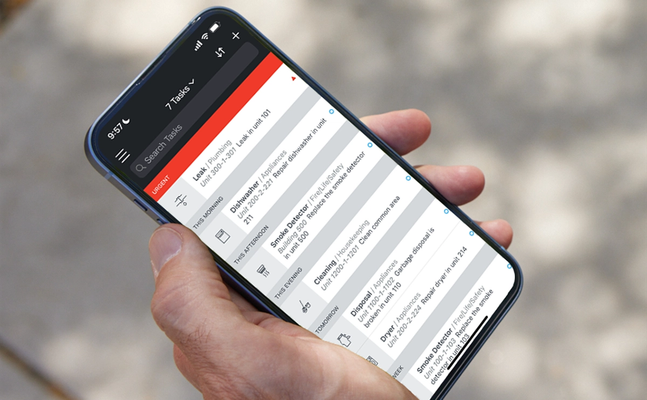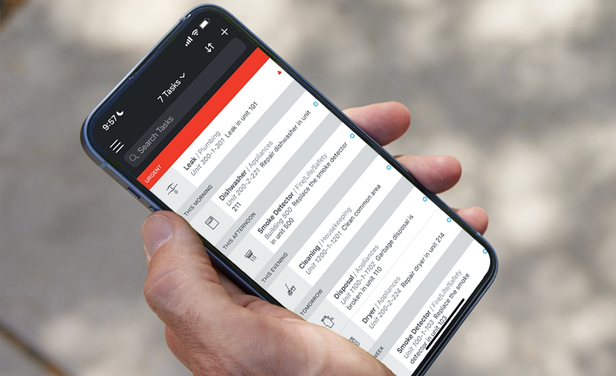Subscribe to our newsletter
Smart tech is quickly becoming an integral part of nearly every aspect of our lives, from smart speakers to smart watches to smart cars. And that’s especially true for multifamily residents and staff.
Smart locks, thermostats, access control and other proptech come with tons of benefits. Embracing these technologies can improve the resident experience, streamline and centralize operations, and—in a world of rapid adoption—keep you competitive.
But adopting isn’t always easy. There are upfront costs, and some people resist such changes. And of course, many property managers worry about adopting new tech that doesn’t have all the kinks ironed out. How do you know when to adopt? Ask yourself these three questions.

1. Are your residents and staff ready?
Some people are more likely to adopt new technology than others. In fact, there are five types of adopters, but most people fall into the middle somewhere:
2.5% of people are innovators. They’re not just ready to adopt new technology, they’re probably inventing new systems and processes in their daily lives.
13.5% of people are early adopters. They like being the first to know about new technology, and they want the latest version of their smartphone, voice assistant and software. They also help motivate others to adopt.
34% of people are early majority adopters. They’ll read reviews and test out new technology, but they’re in no rush to get the latest, greatest gadgets until they see the benefit.
34% of people are late majority adopters. These are the people who tend to delay software updates or use an older-model smartphone because they know it works well. They tend to stand back and watch other adopters before taking any risks with new technology, and they will probably need a push to adopt any new proptech
16% of people are laggards. They tend to distrust new technology and may resist your efforts to implement new proptech.
Generally, younger people are more likely to adopt technology early, and that’s good news for most property managers. Renters tend to be younger than homeowners. But for residents or staff resisting new technology, emphasize the benefits to them and provide plenty of training.
2. Is the market ready?
When we zoom out from individual users, technology adoption tends to follow a common s-curve pattern. Unless a new technology fades away, more people will continue to adopt it as time passes in three stages: emerging, high-growth, and mature.
Emerging markets
Adoption starts at the bottom of the S-curve with low initial numbers that slowly creep up. Adopting technology that’s in an emerging market means you’ll be way ahead of your competition, but only if the technology pans out. The earlier you adopt, the greater the risk of investing in something that never really takes off, like Laserdiscs and Segways. Even if the technology takes off, providers are young and their solutions may go extinct amid stronger competitors. Consider the initial popularity of Blackberry that waned when iPhones hit the market.
High-growth markets
Once adoption hits a tipping point, everyone wants it. This sudden demand kicks off the high-growth market, and everyone and their brother is getting on board. During the rush to adopt, some providers will have trouble keeping up, so you might struggle to schedule installations. Providers start truly differentiating themselves in this stage, and you’ll begin to see which ones have staying power and which ones will fade into history.
Mature markets
By the time a mature market rolls around, most of your competitors will have smart technology. The strongest providers will have prevailed, and they’ll be battling their competitors for your business. Residents will expect smart technology in their homes, and any communities without it will have to slash rents to maintain occupancy.
What stage is smart technology in?
It’s hard to pinpoint which part of the adoption curve we’re in until afterward, but it sounds like we’re nearing the end of an emerging market and may be entering in to a high-growth market. That’s based on the perspective of industry experts at Consumer Electronics Show (CES) in January 2025.
“As we turn the corner in 2025, smart technology is no longer a novelty or an amenity. It is becoming core infrastructure at communities.”
– Braeden Sheer, SmartRent Vice President of Product Management
“I don’t know if we’re at a tipping point yet, but certainly we are on a threshold to the mass market.”
– Greg Mora, Johnson Controls, Executive Director of Business Development
“On average, [there are] 22 connected devices in a customer’s home, but people are more frustrated and overwhelmed than ever. So they’re really looking for not just the device itself, but for an ongoing service.”
–Hagan Kappler, Daisy Co-Founder and CEO
“With this historic new [housing] inventory hitting the market—I think it was a half million in 2024, then another million in 202—that is going to change some of the competitive landscape, so a lot of companies are looking to retrofits and different ways of making this make financial sense for them.”
–Kristen Hanich, Parks Associates Director of Research
“New construction will adopt at close to a high 80s, 90s percent range, but those retrofits, those existing properties, are the next area of expansion that we see.”
–John Butrim, ADT Multifamily Vice President of Multifamily
Adopting now means you’ll still be ahead of your competition, and many of the early kinks in the technology will have been worked out. There are still some risks, but you can mitigate them by carefully choosing a provider with a track record of success and versatile, scalable solutions.
3. Can you stay competitive without smart technology?
Ultimately, no matter where the market is on the adoption curve or how ready your residents and staff, we believe that smart technology is here to stay. We’ve built our company on that belief. And we’ve never been more sure about that than in the current multifamily market.
New inventory is growing, making it harder to justify higher rents. Meanwhile, interest rates and inflation are high, making it hard to keep both OpEx and CapEx budgets low. The pressure to earn more while spending less is squeezing property managers on both ends. You need solutions that give you relief on both sides of the equation, and smart technology does that. It empowers your staff to do more with less—and it’s what more and more of your residents will crave.
The question isn’t whether you should adopt, but when. People are ready. The technology is ready. The market is ready. Are you? Talk with one of our experts today!

